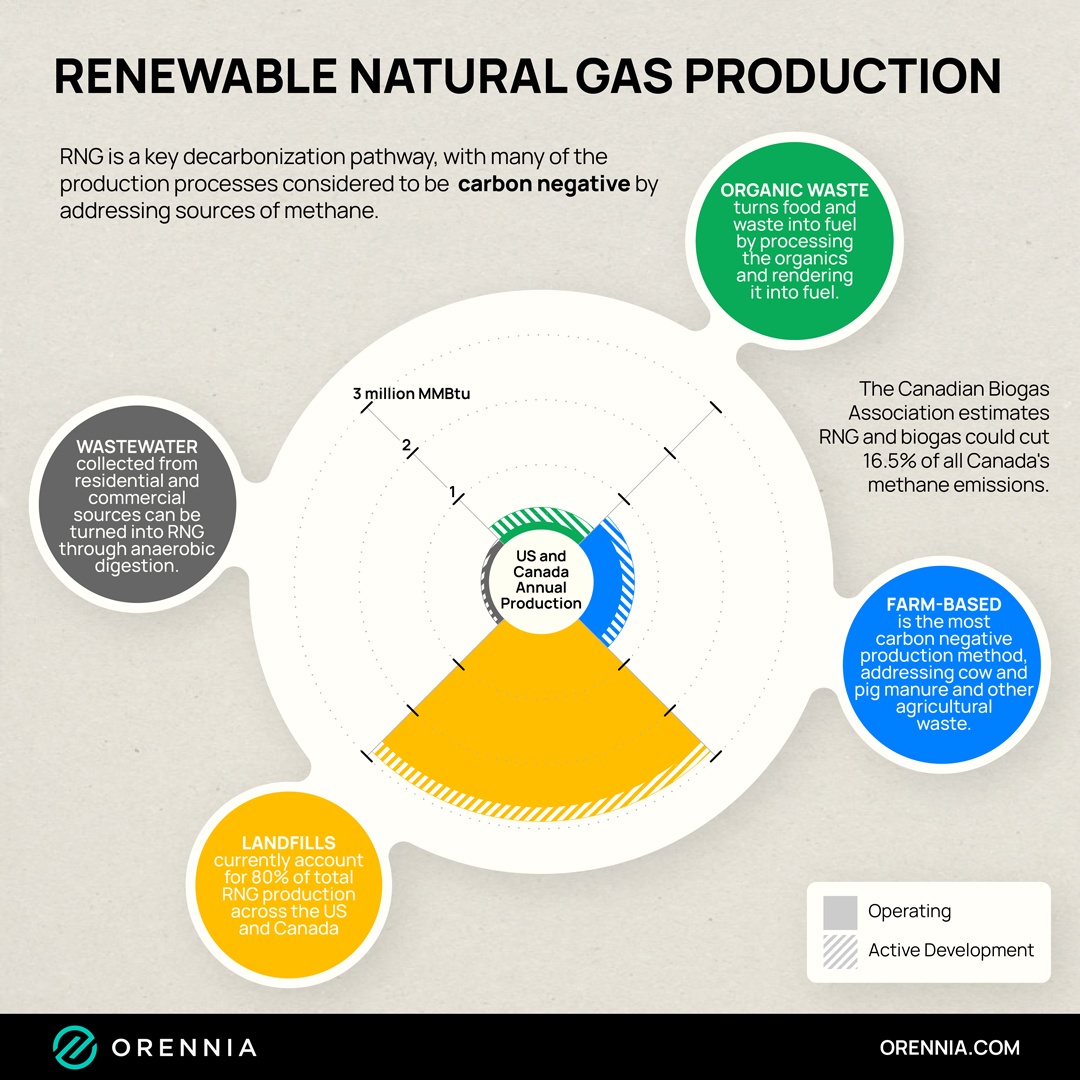
Renewable natural gas (RNG) is an increasingly popular means to decarbonize natural gas systems and reduce waste methane emissions.
How it works: Renewable natural gas (RNG) is a sustainable and renewable energy source produced from organic waste materials. RNG is chemically similar to conventional natural gas but is derived from renewable resources, making it a more environmentally friendly option. The primary sources of RNG include landfill gas, farm-based biogas, organic waste biogas, and wastewater treatment gas.
- Landfill gas: This type of RNG is produced by capturing methane emissions from decomposing organic waste in landfills. Specialized systems collect the methane, which is then cleaned and processed to meet pipeline quality standards. North American landfills are already under strict regulations to address methane emissions.
- Farm-based biogas: This RNG is generated from the anaerobic digestion of animal manure and agricultural residues. Digesters break down organic material in the absence of oxygen, producing biogas, which is refined into RNG. Particularly manure-based RNG has very low, often negative carbon intensities due to eliminating methane emissions.
- Organic waste biogas: RNG from organic waste is produced through anaerobic digestion or thermal gasification of food waste, yard waste, and other organic materials. The biogas generated is upgraded to RNG, providing a valuable use for waste that would otherwise decompose and emit greenhouse gases.
- Wastewater treatment gas: This type of RNG is produced at wastewater treatment plants. Organic matter in sewage and wastewater is broken down by microorganisms in digesters, producing biogas that is then purified into RNG.
RNG is a versatile energy source that can be used for heating, electricity generation, and as a transportation fuel, contributing to reduced greenhouse gas emissions and enhanced energy sustainability.
Newsletter Signup
Data-driven insights delivered to your inbox.